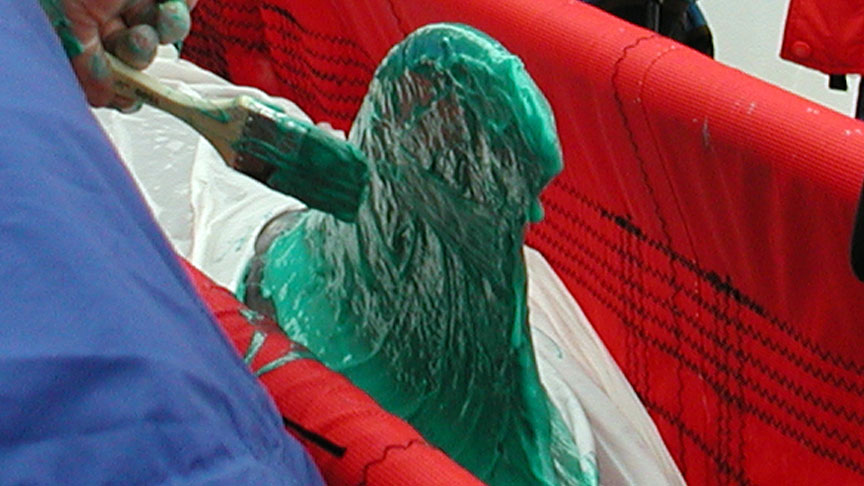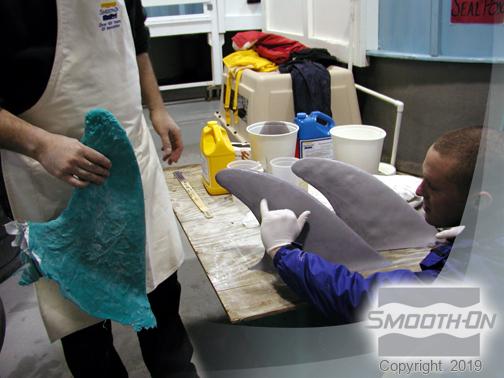"The calls for help from local residents who find an injured animal come at all hours of the day or night. If we're lucky, the animal is still alive when we get to it and there is hope", says Rebecca Scott, a biologist with The Foundation for Marine Research and Preservation in Riverhead, NY. Their mission; to save the lives of sick or injured marine mammals.
The Foundation was recently in search of a way to attach GPS tracking radios to the dorsal fins of dolphins without harming the animals. Placement of the drilled hole in the fin was critical; if not done right, the animal could bleed profusely and be terribly injured.
Biologists needed a way to study the dorsal fin, specifically the vein patterns, to determine safe placement of the drilled hole. After a quick internet search, Body Double™ silicone rubber was on site. Body Double™ Fast-Set was used to minimize the time Orville would be out of water. The mold and support shell was completed in a matter of minutes.
- Orville the dolphin was a reluctant model and took some coaxing to get him into a harness used to take him from his tank and cradle him during the mold making process.
- Body Double™ was brushed on and cured quickly. Orville was back in his tank before he knew it.
- Smooth-Cast™ 300 plastic was poured into the mold cured in minutes.
- Director Robert DiGiovanni points to the vein pattern perfectly reflected in plastic castings and states that "This will ultimately give us the ability to attach tracking devices with almost no trauma to the animal. We're already looking at other ways to use Body Double™ to benefit our other clients (seals, sea turtles, etc.)".







